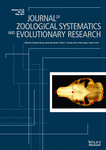Journal list menu
Export Citations
Download PDFs
Cover Image
- Page: i
- First Published: 03 April 2017
Hundreds of analyses using Procrustes-based geometric morphometrics on bilaterally symmetric structures have been performed by using landmarks on just one side. Using 10 samples of mammalian crania (N>500), Cardini shows that the simple reconstruction of the missing side, by mirror-reflection of the available one, might lead to improved accuracy and better visualization, as exemplified on marmots using wireframes before and after the reconstruction of the ‘missing’ side. Journal of Zoological Systematics and Evolutionary Research, Volume 55, Issue 1, February 2017, Pages: 1–10, Andrea Cardini DOI: 10.1111/jzs.12144 Copyright of picture: © Cardini 2016
Evidence for extreme sequence divergence between the male- and female-transmitted mitochondrial genomes in the bivalve mollusc, Modiolus modiolus (Mytilidae)
- Pages: 89-97
- First Published: 15 December 2016
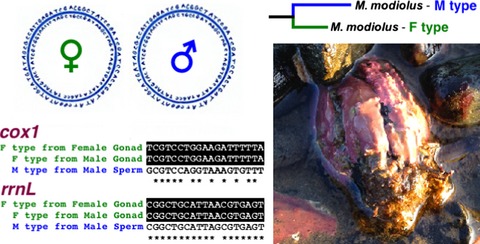
We demonstrate the doubly uniparental inheritance of mitochondrial DNA in the horse mussel, Modiolus modiolus, using cox1 and rrnL gene sequences. The male mitotype is shown to evolve faster than its female counterpart. Standardized p-distances indicate that M. modiolus displays the highest male-to-female conspecific mitotype sequence divergence for any Mytilidae species thus far examined (38%). This therefore establishes a new threshold for the expected genetic divergence of male mytilid mitochondrial genomes.
Characterization of the first mitochondrial genome of a catenulid flatworm: Stenostomum leucops (Platyhelminthes)
- Pages: 98-105
- First Published: 28 February 2017
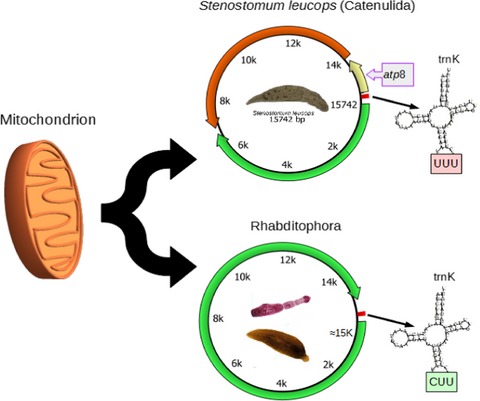
The first mitogenome of a catenulid was characterized. The gene order found is very divergent from those observed in other Platyhelminthes and, also, in contrast to other Platyhelminthes, the mitochondrial genes of Stenostomum leucops are encoded on both strands. Although the atp8 gene is absent in other Platyhelminthes, a highly divergent putative atp8 gene was found in S. leucops. The anticodons found in trnK can explain the differences in the genetic code between Catenulida and Rhabditophora.
Phylogenetic relationships in Kerkia and introgression between Hauffenia and Kerkia (Caenogastropoda: Hydrobiidae)
- Pages: 106-117
- First Published: 08 December 2016
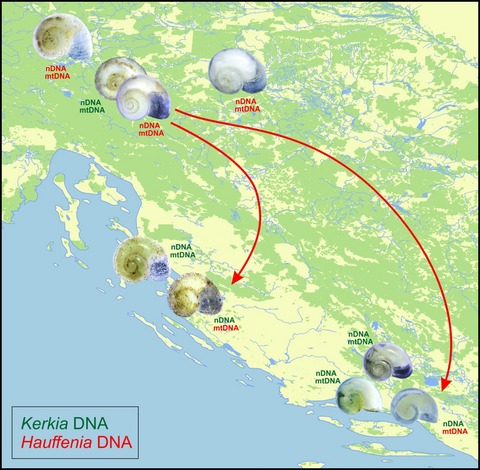
Phylogenetic relationships among four species of Kerkia from five localities in Croatia and one in Slovenia, analyzed with one mitochondrial and three nuclear markers, confirmed their distinctness. There was introgression of the Hauffenia mtDNA from central Slovenia into two Kerkia clades from central and southern Croatia, located 210 and 360 km away, respectively. Secondary loss of isolating mechanisms between phylogenetically distant organisms and the severe lack of information on distribution of these underground taxa may explain this unusual phenomenon.
Searching for the glacial refugia of Erebia euryale (Lepidoptera, Nymphalidae) – insights from mtDNA- and nDNA-based phylogeography in the Western Carpathians
- Pages: 118-128
- First Published: 05 December 2016
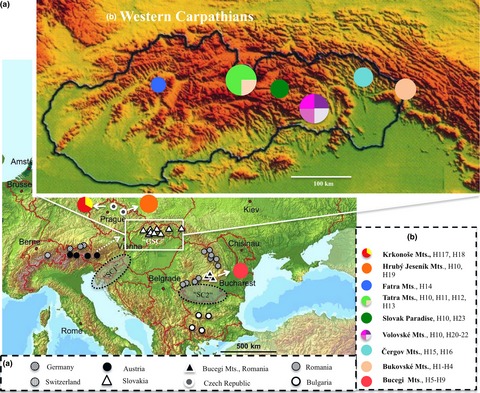
Our results provide new insights into the phylogeography and origin of Erebia euryale (Esper, 1805). Both mitochondrial and nuclear data reflected a congruent phylogeographic history. The high incidence of unique haplotypes in association with the high variability obtained in the maximum-likelihood analysis of the concatenated data set suggests possible E. euryale re-colonization from south-eastern to northern Europe. The observation that the mean genetic diversity of the Western Carpathian populations indicates either an important refuge area or a contact zone between gene pools during the postglacial re-colonization processes.
Taxonomic composition and ploidy level among European water frogs (Anura: Ranidae: Pelophylax) in eastern Hungary
- Pages: 129-137
- First Published: 08 December 2016

In this study, we investigated the taxonomic and genetic composition of the Pelophylax esculentus complex (formed by Pelophylax ridibundus and Pelophylax lessonae and their hybridogenetic hybrid, Pelophylax esculentus) in eastern Hungary. Molecular taxonomic and population genetic analysis indicated the presence of all members of the P. esculentus complex in the studied localities with exclusively diploid hybrid genotypes. Clonal transfer of the P. ridibundus genome in hybridogenetic lineages was indicated at least in two sampling sites with the novel implementation of population genetic approach.
Increased genetic structuring of isolated Salamandra salamandra populations (Caudata: Salamandridae) at the margins of the Carpathian Mountains
- Pages: 138-149
- First Published: 01 December 2016
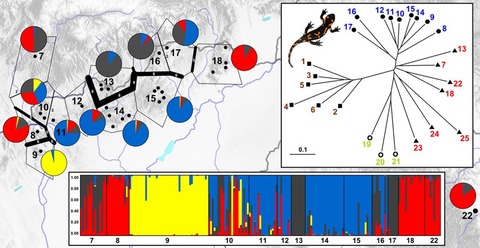
To reveal the genetic structure of Salamandra salamandra within the Carpathian Basin, 25 salamander populations were analysed using one mitochondrial (D-loop) and nine nuclear (microsatellites) markers. Our results evidenced significant structuring on the nuclear level, indicating a different origin for eastern (Carpathian) and western (Alpine) populations, independent evolutionary history for Apuseni Mts. population (belonging to Western Carpathians) and a long-time isolation for the marginal populations of the North Hungarian Mountains dating back to the end of the Last Glacial Maximum.
Microsympatry in cryptic lowland salamanders (Caudata: Plethodontidae: Bolitoglossa subgenus Nanotriton) from north-western Honduras: implications for taxonomy and regional biogeography
- Pages: 150-155
- First Published: 16 November 2016
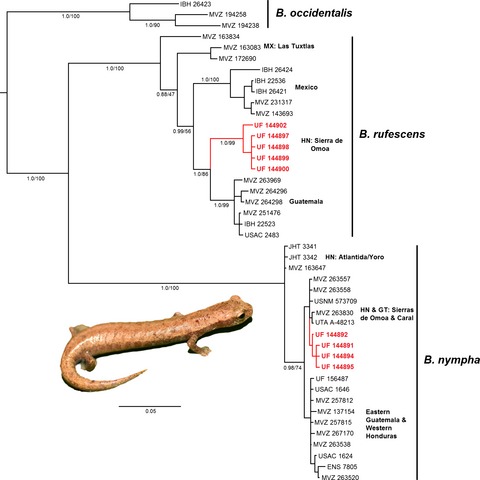
The taxonomy of the subgenus Nanotriton has been a source of confusion among specialists, particularly in Honduras. Phylogenetic analysis of sympatric samples collected from the northern slope of the Sierra de Omoa was performed, showing that the samples represent both B. nympha and B. rufescens. Field examination found these taxa to be morphologically indistinguishable, rendering in situ identification of the two species in north-western Honduras problematic. The discovery of another divergent lineage of B. rufescens highlights the need for a taxonomic reassessment.
The evolutionary history and taxonomic reevaluation of the Japanese coral snake, Sinomicrurus japonicus (Serpentes, Elapidae), endemic to the Ryukyu Archipelago, Japan, by use of molecular and morphological analyses
- Pages: 156-166
- First Published: 28 February 2017
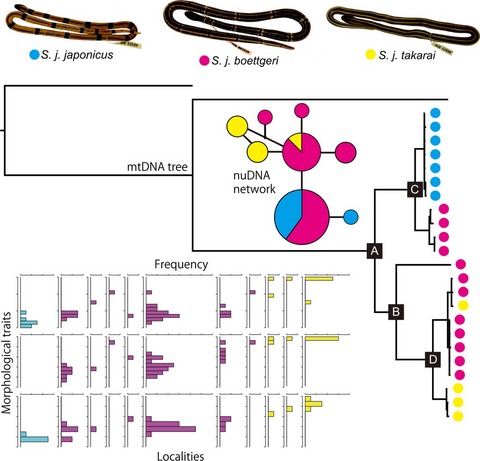
We conducted molecular genetic and morphological analyses on Sinomicrurus japonicus to clarify the evolutionary trajectory of colour patterns and reevaluate subspecific systematics accordingly. The results indicated paraphyly of Sinomicrurus japonicus boettgeri against the other two subspecies, and paraphyly of Sinomicrurus japonicus takarai. Morphological analyses revealed that variations in S. j. boettgeri and S. j. takarai are continuous. From these results, we propose synonymizing S. j. takarai with S. j. boettgeri. Considering the possible evolution of S. j. japonicus through peripheral isolation, we propose to retain the remaining two subspecies.
The leaf turtle population of Phnom Kulen National Park (northwestern Cambodia) has genetic and morphological signatures of hybridization
- Pages: 167-174
- First Published: 03 February 2017
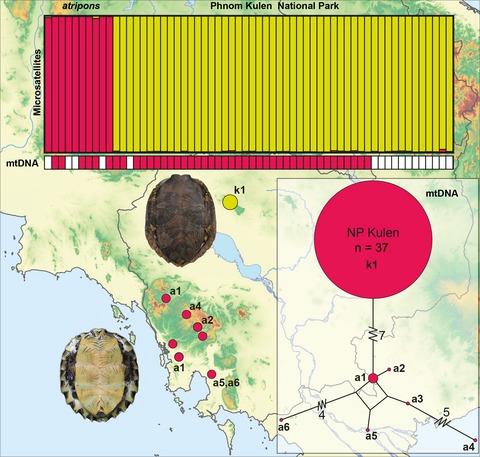
Cambodia is known to harbour three distinct species of leaf turtles (Cyclemys spp). We examine a recently discovered population from Phnom Kulen National Park using external morphology, 17 microsatellite loci and the mitochondrial cytochrome b gene. The turtles morphologically resemble Cyclemys oldhamii, but harbour mitochondrial haplotypes of C. atripons. With respect to microsatellite loci, the turtles are distinct from C. atripons. We propose that this population represents either a natural hybrid swarm or a distinct undescribed species with introgressed mitochondria.




